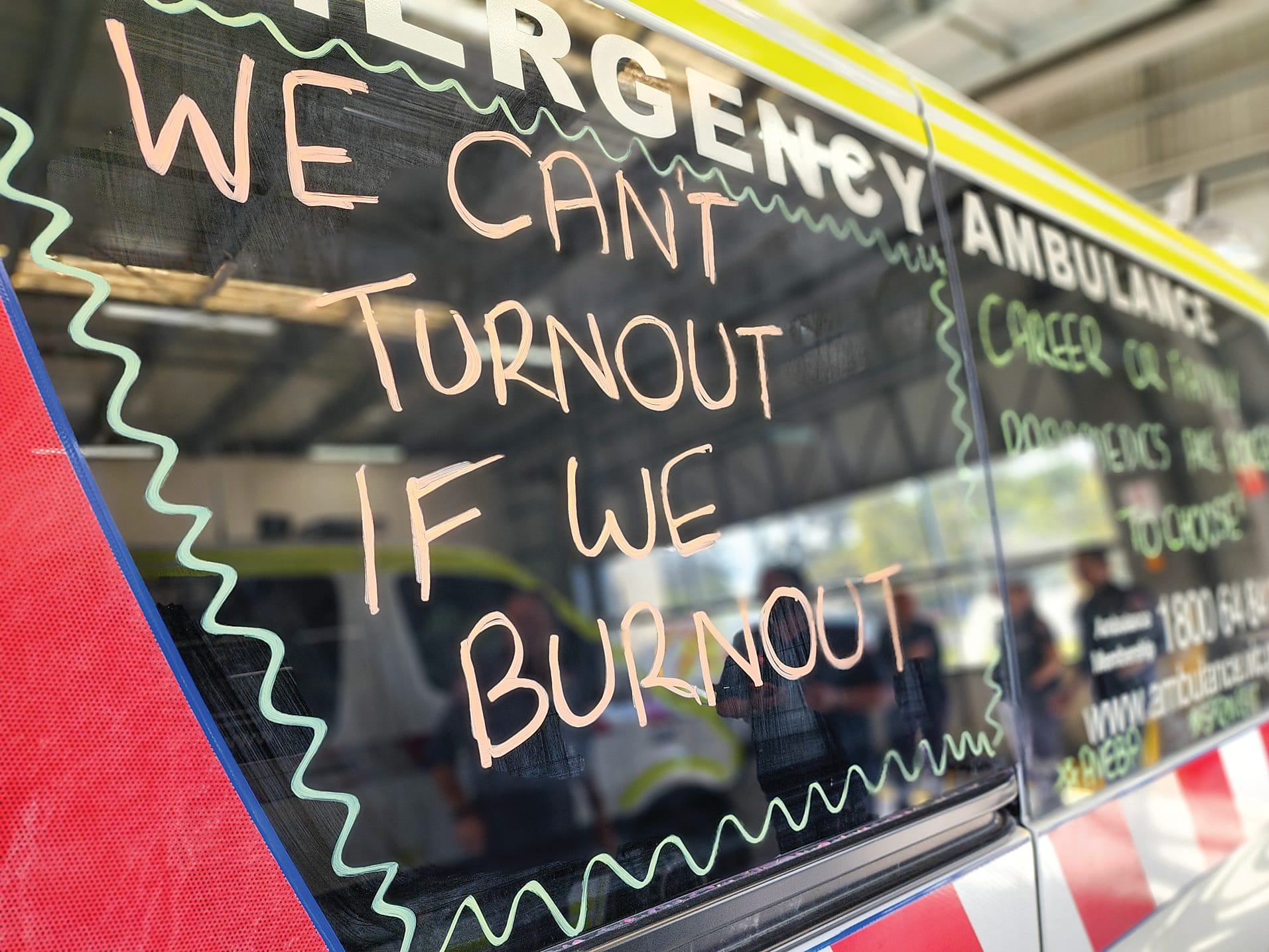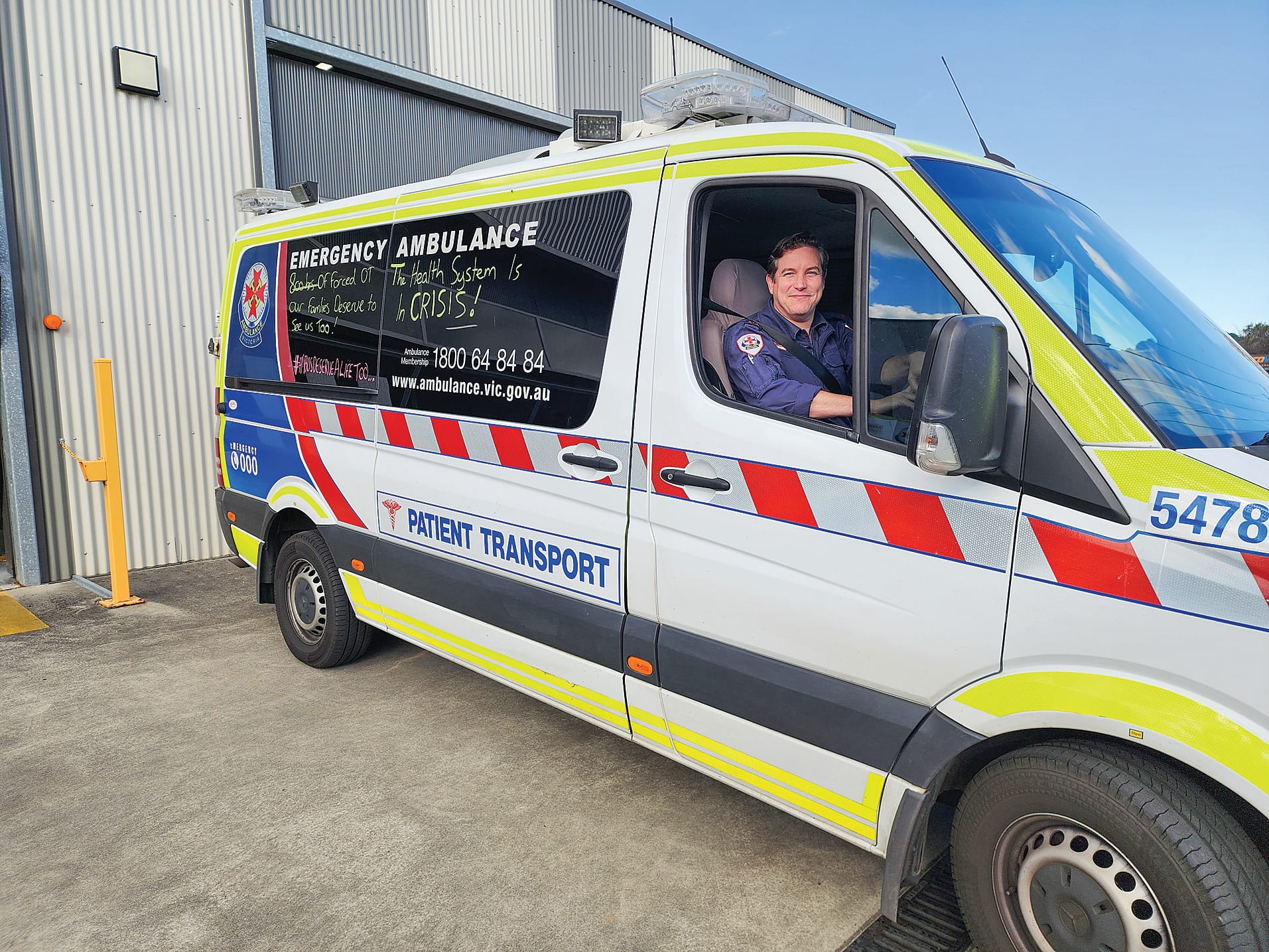We can’t turnout if we burnout
AMBULANCE Victoria paramedic’s industrial action for better working conditions is still no closer to being solved on Thursday, according to Advanced Life Support Paramedic, and Wonthaggi’ s delegate to the Victorian Ambulance Union, Samanth...

AMBULANCE Victoria paramedic’s industrial action for better working conditions is still no closer to being solved on Thursday, according to Advanced Life Support Paramedic, and Wonthaggi’ s delegate to the Victorian Ambulance Union, Samantha Nicholls.
“There’s been 91 meetings so far, and no agreement has been reached,” Ms Nicholls said referencing the period since March 18 when the Sentinel-Times broke the story locally.
“One of our main issues is end of shift management. This is about protection towards the end of shifts with the aim of finishing on time. We wanted to finish within the realm of our current 10 to 14-hour shifts. But Ambulance Victoria hasn’t even come close to considering that.”
Amongst end of shift guarantees, the major clauses for local Gippsland paramedics focus on fatigue management and overtime.
“It’s not just about better pay, it’s about significant holes in care and under resourcing that are fueling overtime and fatigue,” local paramedics added.
Paramedics are seeking greater work life balance, for their families, and for their own wellbeing.
“We’re doing 800 hours a day in overtime. That’s ridiculous,” Samantha lamented noting that significant amount of overtime is due to lower-acuity cases.
“There are nearly 800 proposed items (put forward for the Enterprise Agreement), and a lot of them are just little things to make the job better.”
There’s no denying increasing morale will extend longevity and help keep experienced workers in the industry.
“We’ve also had a huge issue with MICA (Mobile Intensive Care Ambulance) paramedics, particularly around pay – there’s no significant pay uplift,” Ms Nicholls explained.
“When you become a MICA paramedic from ALS you take a small down step in pay when undertaking the training. MICA paramedics take on more skills and more responsibility. But there’s still no significant financial incentive to do so. Especially in rural Victoria there are a lot of MICA shifts going unfilled, which is terrifying, especially as an ALS paramedic, when you need a lot of help and everything is going wrong, your closest MICA paramedic is Cranbourne or Latrobe Valley – it’s a very long time to be without support.
“There’s also rostering. In metro, they have a staggered rostering system because they have so many branches, shifts are staggered, and you’ll have some overlap. This helps reduce excessive overtime.”


Locally the issue was not just about finishing on time, or near to. It was about the quality of life, about parents being able to pick up their kids from daycare and paramedics being able to rest and recuperate before the next shift.
“Paramedics are turning over quicker, people are not wanting to stay in the job longer, there’s a huge cohort ready to leave – there’s so many little things that need to change,” Ms Nicholls continued.
The industrial action has also highlighted the need for better resourcing. Paramedics constantly complete transfers due to the lack of non-emergency ambulances; meaning communities are often left without an ambulance for prolonged periods. Paramedics understand there will always be some overtime involved in ambulance work, but this campaign is about reducing excessive overtime.
“We’re severely under resourced,” one local paramedic stated. “The region is particularly vulnerable overnight, and non-emergency transport funding ceases at the end of the financial year. It’s a health wide dilemma.”
The wait times to offload a stretcher at the hospital is also a significant problem with paramedics often tied up for low-acuity cases or non-urgent transport.
“There is no way to hand over a patient or leave hospital at a certain time – we might be waiting at a hospital for three or four hours. Even though the patient is in a hospital with doctors, we cannot leave.”
The paramedics were also advocating for reform to the dispatch grid, which allocates jobs, particularly in handling low acuity jobs and correct triaging.
Despite the challenges, paramedics remain hopeful that one day they won’t have to choose between their wellbeing, career or family.
In the meantime, their message is simple – “keep emergency ambulances for emergencies.”
“Patients are still triaged in the same manner whether they walk-in or are transported by ambulance. Virtual ED is a great resource for non-emergency medical care – with highly skilled doctors and nurses, and also the Urgent Care Centre in Cowes.”
“Save emergency ambulances for emergencies.”





